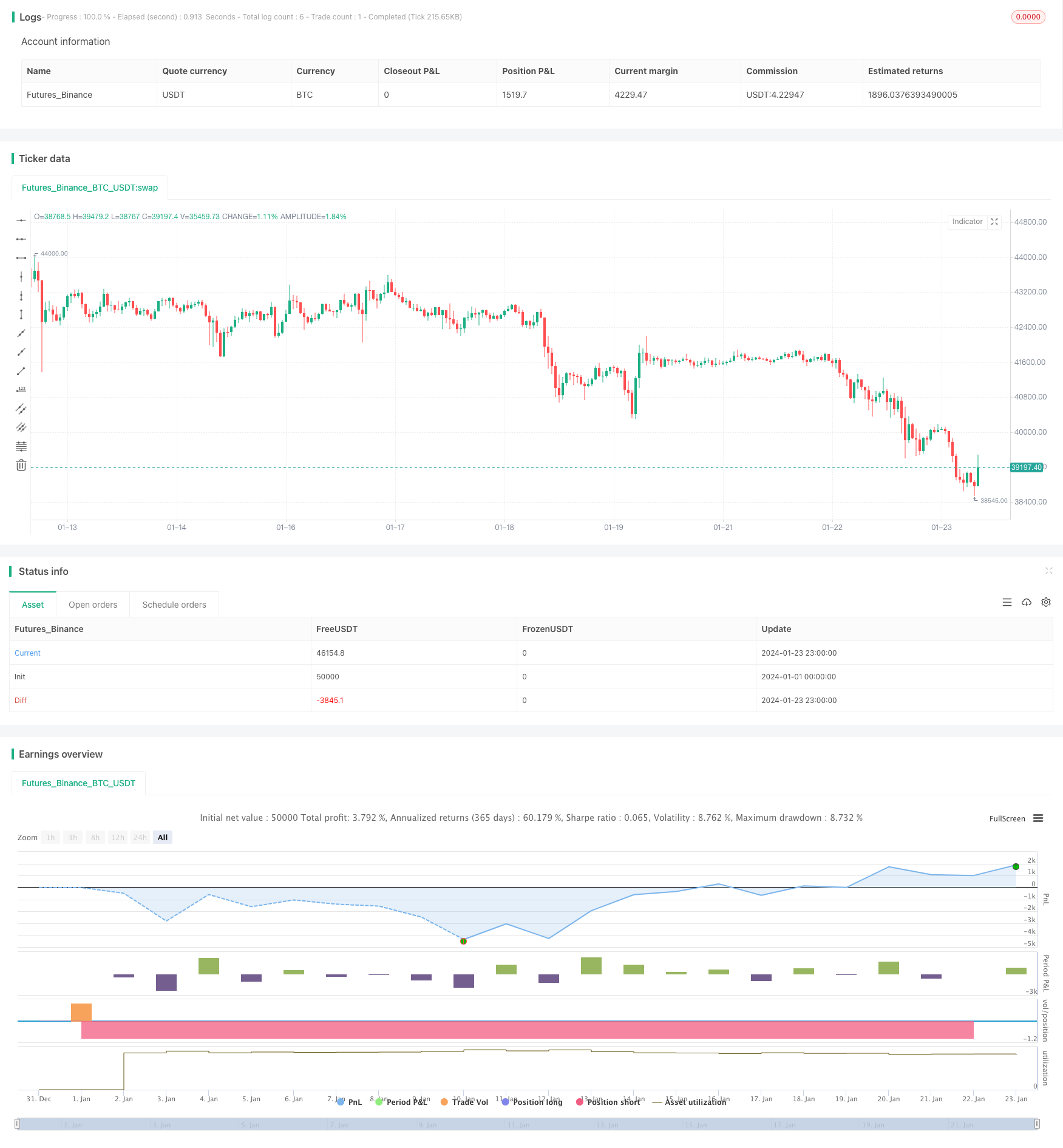
概述
该策略是一个基于Nifty 50指数的高频量化交易策略。它通过跟踪Nifty 50指数的价格变化,结合开放利益变化情况,在支持位附近采取逢低买入,在阻力位附近采取逢高卖出的操作,实现盈利。
策略原理
该策略首先获取Nifty 50指数的开放利益变化情况。然后它会根据设置的支持阻力位,以及开放利益变化幅度的阈值,产生买入和卖出信号。具体来说:
- 当指数价位接近支持位,且开放利益变化超过设定的买入阈值时,产生买入信号
- 当指数价位接近阻力位,且开放利益变化低于设定的卖出阈值时,产生卖出信号
通过这种方式,可以在支持位附近进行逢低买入操作,在阻力位附近进行逢高卖出操作,进而获利。
优势分析
该策略具有以下几个优势:
- 操作频率高,可以捕捉短期价格波动,盈利空间大
- 利用开放利益信息辅助决策,可以更准确判断市场情绪
- 支持动态调整仓位,可以根据市场情况灵活应对
- 简单容易理解,参数调整也较为方便
- 可扩展性强,可以考虑融入机器学习等算法进一步优化
风险分析
该策略也存在一些风险:
- 高频交易带来的滑点风险。可以适当放宽买卖条件以减少交易频率。
- 支持阻力位设定不当,可能错过交易机会或增大亏损。应定期评估调整参数。
- 开放利益信息存在滞后,可能出现信号发出不准确。可以考虑多因子模型。
- 回测期限过短,可能高估了策略收益。应在更长的回测周期内验证策略稳健性。
优化方向
该策略可以从以下几个方面进行进一步优化:
- 增加止损逻辑,可以有效控制单笔亏损
- 结合波动率、成交量等指标设定动态交易信号
- 增加机器学习算法,实现参数的自动优化和调整
- 扩展多品种交易,进行股指期货和选股的组合
- 增加量化风控模块,可以更好地控制整体的尾部风险
总结
本策略是一个简单高效的基于Nifty 50的量化交易策略。它具有操作频率高、利用开放利益信息、支持动态调仓等优势,也存在一定的改进空间。总体来说,该策略为打造多因子、自动化、智能化的量化交易系统奠定了坚实的基础。
策略源码
/*backtest
start: 2024-01-01 00:00:00
end: 2024-01-24 00:00:00
period: 1h
basePeriod: 15m
exchanges: [{"eid":"Futures_Binance","currency":"BTC_USDT"}]
*/
//@version=5
strategy("Intraday Nifty 50 Bottom Buying and Selling with OI Strategy", overlay=true)
// Input parameters
niftySymbol = input("NIFTY50", title="Nifty 50 Symbol")
oiLength = input(14, title="Open Interest Length")
supportLevel = input(15000, title="Support Level")
resistanceLevel = input(16000, title="Resistance Level")
buyThreshold = input(1, title="Buy Threshold")
sellThreshold = input(-1, title="Sell Threshold")
// Fetch Nifty 50 open interest
oi = request.security(niftySymbol, "D", close)
// Calculate open interest change
oiChange = oi - ta.sma(oi, oiLength)
// Plot support and resistance levels
plot(supportLevel, color=color.green, title="Support Level")
plot(resistanceLevel, color=color.red, title="Resistance Level")
// Plot open interest and open interest change
plot(oi, color=color.blue, title="Open Interest")
plot(oiChange, color=color.green, title="Open Interest Change")
// Trading logic
buySignal = close < supportLevel and oiChange > buyThreshold
sellSignal = close > resistanceLevel and oiChange < sellThreshold
// Execute trades
strategy.entry("Buy", strategy.long, when=buySignal)
strategy.entry("Sell", strategy.short, when=sellSignal)